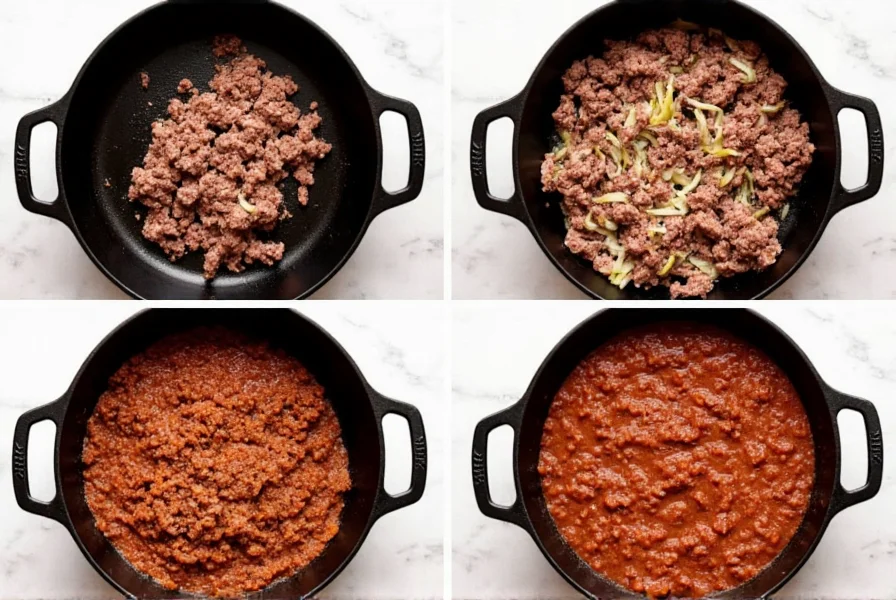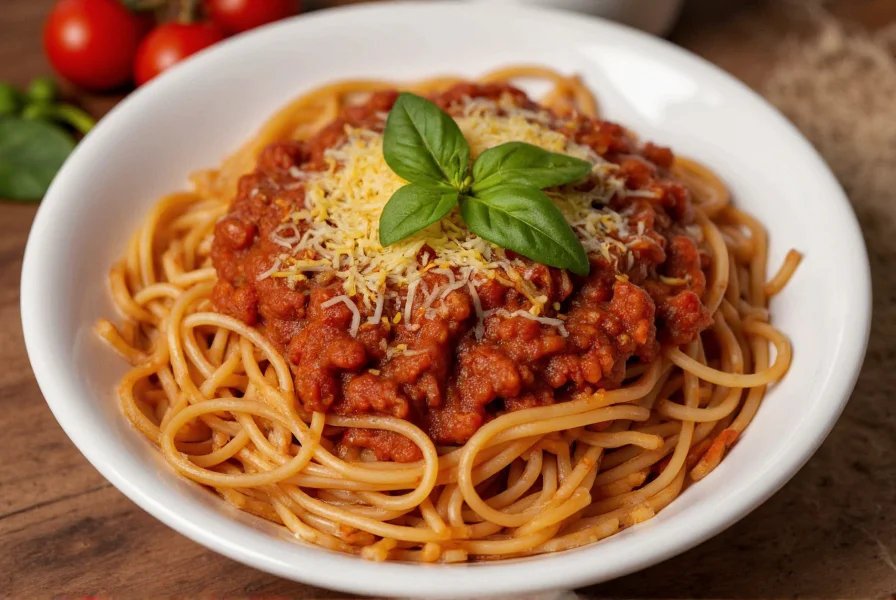What Exactly Is Spaghetti Chili?
Spaghetti chili represents a creative American culinary adaptation that merges two beloved comfort foods. Unlike traditional chili which is served as a standalone stew, spaghetti chili incorporates cooked spaghetti noodles as the base, topped with a robust meat and bean chili sauce. This combination creates a balanced meal with complex carbohydrates from the pasta complementing the protein and fiber from the chili.
The Origins of This Comfort Food Fusion
While traditional chili con carne has roots in Texas and Mexican cuisine dating back to the 19th century, the spaghetti variation emerged later as home cooks sought to stretch meals during economic hardships. Food historians note spaghetti chili gained popularity during the mid-20th century when American households began experimenting with combining pantry staples. The dish represents practical meal planning—using spaghetti to extend the serving size of chili while adding textural contrast.
Spaghetti Chili vs. Traditional Chili: Key Differences
The primary distinction lies in the serving method and composition. Traditional chili stands alone as a thick stew, often served with optional toppings. Spaghetti chili, however, features spaghetti as an integral component, creating a different eating experience. The pasta absorbs some chili liquid while maintaining its structure, resulting in a less soupy consistency than many traditional chili preparations.
| Characteristic | Spaghetti Chili | Traditional Chili |
|---|---|---|
| Base Component | Spaghetti noodles | Stew alone |
| Consistency | Thicker, pasta absorbs liquid | Can range from thick to soupy |
| Serving Style | Chili over pasta | Standalone bowl |
| Meal Balance | Complete protein-carb meal | Often requires side dishes |
Essential Ingredients for Authentic Spaghetti Chili
Creating the perfect spaghetti chili requires attention to ingredient quality and balance. The foundation starts with quality ground beef (80/20 lean-to-fat ratio works best for flavor), though many home cooks successfully substitute ground turkey or plant-based alternatives. The tomato component should include both crushed tomatoes for body and tomato paste for concentrated flavor.

Step-by-Step Preparation Guide
Begin by cooking 1 pound of spaghetti according to package directions, but undercook by 1 minute since it will continue cooking when combined with the hot chili. Drain and toss with olive oil to prevent sticking. For the chili component, brown your meat with diced onions and garlic until properly caramelized—this Maillard reaction creates essential flavor compounds often missing in rushed preparations.
Next, add 28 ounces of crushed tomatoes, 15 ounces of kidney beans (drained and rinsed), 2 tablespoons of tomato paste, and your spice blend. A balanced spice mix includes 2 tablespoons chili powder, 1 teaspoon cumin, 1/2 teaspoon smoked paprika, and a pinch of cayenne for heat. Simmer uncovered for at least 25 minutes to develop flavors, stirring occasionally. Combine with spaghetti just before serving to maintain optimal texture.
Expert Tips for Perfect Spaghetti Chili Every Time
Professional chefs emphasize several techniques that elevate this humble dish. First, toast your spices in the meat drippings for 30 seconds before adding liquids—this blooms the essential oils in dried spices. Second, include a small amount of dark chocolate (about 1 ounce) or espresso powder to deepen the flavor profile without making it sweet. Third, finish with fresh cilantro and a squeeze of lime juice just before serving to brighten the rich flavors.

Variations to Suit Different Tastes
For those seeking spaghetti chili recipe variations, consider these adaptations. White bean spaghetti chili substitutes cannellini beans and chicken broth for a lighter version. Vegetarian spaghetti chili replaces meat with extra beans and mushrooms for umami depth. Some regional adaptations include adding cornbread crumbs as topping or serving with avocado slices for creaminess. For meal prep enthusiasts, spaghetti chili makes excellent leftovers as the flavors continue to meld.
Serving Suggestions and Pairings
While spaghetti chili stands well on its own as a complete meal, thoughtful accompaniments enhance the experience. A simple green salad with vinaigrette cuts through the richness, while cornbread provides complementary texture. For beverage pairings, medium-bodied red wines like Zinfandel or chilled Mexican lager beers work beautifully. When serving, always place the spaghetti first, then ladle the chili over it—this prevents the pasta from becoming soggy.
Storage and Reheating Best Practices
Proper storage maintains quality for future meals. Cool spaghetti chili completely before transferring to airtight containers. Refrigerate for up to 4 days or freeze for up to 3 months. When reheating, add a splash of broth or water to restore moisture, as the spaghetti absorbs liquid during storage. Microwave in 30-second intervals stirring between, or gently warm on the stovetop over medium-low heat. Avoid boiling which can make the spaghetti mushy.
Why This Dish Endures as a Weeknight Favorite
Spaghetti chili remains popular because it solves multiple meal-planning challenges simultaneously. It's economical, using affordable ingredients that stretch to feed a family. The preparation timeline allows for multitasking—while spaghetti cooks, the chili simmers. Most importantly, it satisfies diverse palates, appealing to both pasta lovers and chili enthusiasts. This spaghetti chili meal preparation requires minimal specialized equipment, making it accessible to cooks of all skill levels.
Can I make spaghetti chili in a slow cooker?
Yes, you can prepare spaghetti chili in a slow cooker. Brown the meat and sauté vegetables first, then transfer to the slow cooker with remaining ingredients except the spaghetti. Cook on low for 6-8 hours, then cook spaghetti separately and combine just before serving to prevent mushiness.
What's the best way to prevent spaghetti from getting soggy in chili?
To prevent soggy spaghetti, undercook the pasta by 1 minute, rinse with cold water to stop cooking, and toss with olive oil. Combine with the chili just before serving rather than mixing them while hot. Store components separately if meal prepping.
How can I make spaghetti chili healthier without sacrificing flavor?
For a healthier version, use lean ground turkey instead of beef, increase vegetable content with diced bell peppers and zucchini, and choose whole wheat spaghetti. Boost flavor with extra spices rather than salt, and top with fresh herbs instead of excessive cheese.
What are traditional toppings for spaghetti chili?
Popular spaghetti chili toppings include shredded cheddar cheese, sour cream, sliced green onions, fresh cilantro, and crushed tortilla chips. Some regional variations add avocado slices or a dollop of guacamole for creaminess without dairy.
Can I use different types of pasta besides spaghetti?
Absolutely. While spaghetti is traditional, other long pasta like linguine or fettuccine work well. Some prefer short pasta shapes like penne or rotini which hold the chili sauce differently. Just adjust cooking times according to package directions for your chosen pasta.











 浙公网安备
33010002000092号
浙公网安备
33010002000092号 浙B2-20120091-4
浙B2-20120091-4